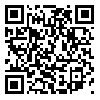Volume 7, Issue 1 (6-2021)
J Sport Biomech 2021, 7(1): 30-43 |
Back to browse issues page
Download citation:
BibTeX | RIS | EndNote | Medlars | ProCite | Reference Manager | RefWorks
Send citation to:



BibTeX | RIS | EndNote | Medlars | ProCite | Reference Manager | RefWorks
Send citation to:
Hajizadeh F, Sedaghati P, Saki F. The Effect of Comprehensive Corrective Exercises on Posture of Wushu Practitioners With Upper Cross Syndrome. J Sport Biomech 2021; 7 (1) :30-43
URL: http://biomechanics.iauh.ac.ir/article-1-244-en.html
URL: http://biomechanics.iauh.ac.ir/article-1-244-en.html
1- Department of Sport Injuries and Corrective Exercise, Faculty of Physical Education and Sport Sciences, Islamic Azad University, Karaj Branch, Karaj, Iran.
2- Department of Sport Injuries and Corrective Exercise, Faculty of Physical Education and Sport Sciences, University of Guilan, Rasht, Iran.
3- Department of Sport Injuries and Corrective Exercise, Faculty of Sport Sciences, Bu-Ali Sina University, Hamedan, Iran.
2- Department of Sport Injuries and Corrective Exercise, Faculty of Physical Education and Sport Sciences, University of Guilan, Rasht, Iran.
3- Department of Sport Injuries and Corrective Exercise, Faculty of Sport Sciences, Bu-Ali Sina University, Hamedan, Iran.
Abstract: (1789 Views)
Objective: Perform repetitive movements or long-term positioning causes adaptations in muscles and jointsand it can cause various disorders. To correct it, it is necessary to correct the movement pattern and use exercises to return to the desired muscle and joint position. The aim of this study was to investigate The effect of comprehensive corrective exercises on posture of the wushu athletes with upper cross syndrome.
Methods: The method of the present study is quasi-experimental with pre-test and post-test. The statistical population of this study included wushu men living in Kerman province with at least 3 years of sports experience. To this end, 30 Wooshakar males with forward Head, forward shoulder and kyphosis malalignment participated voluntarily in this study. A randomized placebo group was divided into two control groups and experimental were divided. Experimental group was selected for correction exercises for 10 weeks and 3 sessions per week for 20 to 60 minutes, while the control group did not receive any training program during this period. The evaluation of forward Head and forward shoulder and kyphosis angle were performed in two stages. Paired t-test and covariance analysis were used for data analysis. SPSS software was used at the significance level (P≤0.05).
Results: The results showed that the mean forward Head and forward shoulder and kyphosis angle of the subjects decreased after participating in the corrective training program (P=0.001).
Conclusion: Based on the results of this study, it is recommended to use the selected corrective exercise program to reduce the amount of head forward, shoulder forward, kyphosis and improve the upper limb function of athletes prone to the upper cross syndrome. Therefore, in addition to reducing the mentioned complications, it can also affect their performance.
Methods: The method of the present study is quasi-experimental with pre-test and post-test. The statistical population of this study included wushu men living in Kerman province with at least 3 years of sports experience. To this end, 30 Wooshakar males with forward Head, forward shoulder and kyphosis malalignment participated voluntarily in this study. A randomized placebo group was divided into two control groups and experimental were divided. Experimental group was selected for correction exercises for 10 weeks and 3 sessions per week for 20 to 60 minutes, while the control group did not receive any training program during this period. The evaluation of forward Head and forward shoulder and kyphosis angle were performed in two stages. Paired t-test and covariance analysis were used for data analysis. SPSS software was used at the significance level (P≤0.05).
Results: The results showed that the mean forward Head and forward shoulder and kyphosis angle of the subjects decreased after participating in the corrective training program (P=0.001).
Conclusion: Based on the results of this study, it is recommended to use the selected corrective exercise program to reduce the amount of head forward, shoulder forward, kyphosis and improve the upper limb function of athletes prone to the upper cross syndrome. Therefore, in addition to reducing the mentioned complications, it can also affect their performance.
Type of Study: Research |
Subject:
Special
Received: 2021/01/3 | Accepted: 2021/02/21 | Published: 2021/06/21
Received: 2021/01/3 | Accepted: 2021/02/21 | Published: 2021/06/21
| Rights and permissions | |
 |
This work is licensed under a Creative Commons Attribution-NonCommercial 4.0 International License. |








